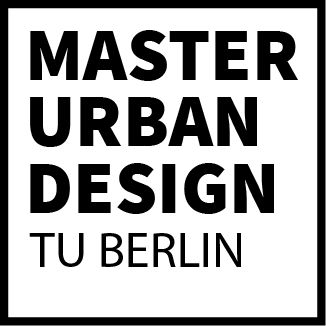 Urban Design Studio
Urban Design Studio
Spatial Commons 15 – Berlin Where Do We Stand? WS 2022/2023
Tutors: Anna Heilgemeir, Julia Köpper and Jörg Stollman
Chair of Urban Design and Urbanisation, Chair of Urban Design and Urbanisation
Students:
Martina Friedrich, Lena Löhnert, Emilie Rážová, Dilara Uçar
PHYTOREMEDIATION BLOCK 130 is a phased approach for sustainably redesigning B.ttgerblock in the highly densified Gesundbrunnen neighbourhood of inner city Berlin. In a five-tiered redevelopment process the highly polluted soil within the block is sanitized through the introduction of plants. As well as acting as natural decontaminants, they establish themselves permanently as sustainable green structures and habitats for a multitude of local stakeholders. The project serves as a prototype and breeding ground for research and future inner city developments.
While throughout the various teams the necessity to create a high degree of housing density crystallised along with the wish to make the block permeable and yet still maintain its character of an inclusive „arrival city“, the authors‘ focus lay on a multispecies redevelopment approach. This perspective did not exclude human stakeholders involved on site: The creation of a process of phasing should allow human as well as non-human actors to claim their space within the block; vegetation acting as remediator of the polluted ground is hereby not only seen as a tool, a means to an end that can be removed after the process is completed, but as a species in its own right that can equally claim space as it can foster knowledge, value and habitat.

A preliminary investigation states that the site of Böttgerblock is suspected to be heavily polluted. This is related to the former industrial use (brewery and railway transport) but also to the current use, that are car repair workshops. This contamination creates economic risks for any development plans on this site. Investigations and experience from many other sites with soil pollution show, that, even after soil probing is done, unforeseen findings of pullutants often still occur. The resulting stagnation onto the construction process will then drive costs intensively. For any developer planning housing or rentals in general, it means to calculate higher investment costs in, which will less likely lead to affordable rents in the end. Another downside with soil sanitation, is the ecological impact on a broader scale. Conventional methods of soil sanitation, as stripping and land filling, are basically exchanging contaminted soil with noncontaminated soils, that have to be extracted somewhere and transported onsite. Not only, this is harmful to ecosystems, it is as well very costly. We therefore proposed the method of bioremediation, which is non-invasive, protecting ecosystems and needs only a minimum of the monetary investment. From the current state of research it is stated, that costs are around 3% of the conventional methods. And as soil pollution is a major problem in the whole city, Böttgerblock could function as a prototype site for the conversion of Berlins former industrial areas. The newly introduced vegetation, together with the already existing flora will co-create the urban biotope and a livable space for a multitude of species, while the maximized unsealed area will help in terms of climate adaptability.

Two processes that were applicable for Block 130, have been identified. Phytoextraction, which is capable of metabolizing anorganic pollutants, such as mercury, lead, cadmium and arsenic. And phytodegradation, which can deal with organic, namely crude oil based substances such as petrol and diesel oils. The plant genus is capable of performing both of these processes to be various species of willow and focused on Salix viminalis.


Key themes include:
- How can the demands for highly densified housing be met while granting highly liveable surroundings?
- How can the specific local character be preserved and existing (infra-)structures valued in the redevelopment process?
- Can one design approach reconcile the needs and demands of human and non-human actors?
- How could a redevelopment approach be both economically and environmentally viable?





